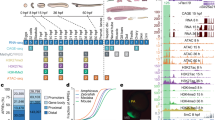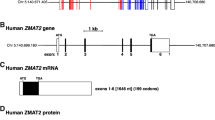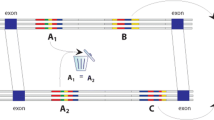Abstract
The puffer fish Takifugu rubripes (Fugu), with its compact genome, is an ideal model organism for comparative genomics. Sonic hedgehog (Shh) is a key protein in the patterning of differentiating cells during embryonic development. We have sequenced the Fugu Shh gene and compared it with the mammalian and zebrafish orthologs, identifying a number of novel conserved, non-coding sequences upstream of exon one and within the two introns. Additional conserved sequences serve to delineate activator regions and enhancers previously characterized through functional analysis. Control elements can thus be rapidly and effectively predicted by comparative methodology in its own right as well as complementing other, functional methods. This work demonstrates the value of using Fugu in comparative genomics, which has allowed identification of new putative regulatory elements, as well as corroborating enhancers identified by the more traditional deletion mapping method.
Similar content being viewed by others
Author information
Authors and Affiliations
Rights and permissions
About this article
Cite this article
Goode, D., Snell, P. & Elgar, G. Comparative analysis of vertebrate Shh genes identifies novel conserved non-coding sequence . Mamm Genome 14, 192–201 (2003). https://doi.org/10.1007/s00335-002-3052-z
Received:
Accepted:
Issue Date:
DOI: https://doi.org/10.1007/s00335-002-3052-z




